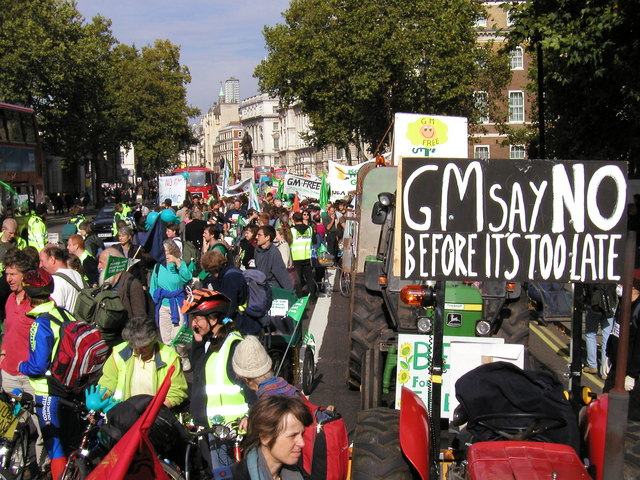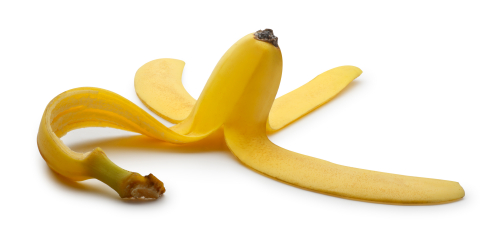The Green Foodprint was recently selected for review by Publishers Weekly, one of the most distinguished and respected sources for book reviews in the industry. For their expert opinion, click here and read the glowing review they gave The Green Foodprint.
When I was writing The Green Foodprint, I checked out some of the quaint devices you can buy to make cooking “easier.” I located the following:
- Microwaveable ice cream scoop
- Cherry pitting device
- Home cotton candy maker
- Oddly shaped pan that bakes brownies with more edges
- Gadget that cuts up a hot dog to look like an octopus.
- Microwave s’more maker
- Avocado knife
While one might applaud the ingenuity, I shook my head over the waste of metal, plastic, packaging, trucking, and electricity that go into manufacturing, distributing, and using these ridiculous toys. But wait! There’s more! You can also get a stainless steel lobster fork, a toaster with a Darth Vader design, a voice-recognition electronic grocery list organizer (for a mere $150), and an espresso machine that (I kid you not) recognizes your fingerprint so it will make your drink just the way you like it, without all that exhausting pushing of buttons on regular espresso machines. This toy will set you back $3,200.
Seems I’m not the only one scratching her head at this technology gone wild. A New York Times reporter also found people who confessed to having purchased an automatic polenta maker, escargot tongs, milk frothing machines, and a panini press. It appears that Rube Goldberg is alive and well in the design department of manufacturers desperate to part you from your money.
Here’s the main advice I give in The Green Foodprint: Use your muscles to chop, stir, peel, and all the rest. You’ll be healthier for it – and so will the earth.
You’ve heard that in nature, there’s no such thing as waste. Yet in America, the amount of food that we waste every year is staggering. A study found that we waste millions of tons of food a year — 29% of all we produce – at many points, from farm, to packer, to store, to table.
Given that there are so many hungry people in this country, that’s a tragic loss. But the study pointed out another consequence that I hadn’t thought of before: the entire life cycle of growing, packaging, transporting, and disposing of all this waste produces 2% of our greenhouse gas emissions, over a hundred million tons of carbon dioxide a year. Meanwhile, a staffer for the Natural Resources Defense Council found that the average American family of four loses up to $175 a month in wasted food, and included some interesting charts she gleaned from the report mentioned in the first paragraph.
We can stop this waste and eat healthily and creatively. An article with the provocative title “That’s Not Trash, That’s Dinner” gave several ideas for using those thick broccoli stalks: peel and chop them to make soup, or shred them to put into broccoli slaw, or shave them and top with lemon zest and Parmesan cheese.
What you can do:
- If you buy a new or special ingredient on impulse (and that’s not a bad thing, since diversity in diet is good for us and for the earth), be sure to use it right away.
- Enjoy leftovers. This is your chance to learn new recipes, or put on your creative hat and invent something original. My own theory is that some of our favorite dishes evolved from the combination of leftovers and necessity.
- Compost the scraps that aren’t salvageable (heavy cauliflower leaves and stalks, for instance, and the odd bits you scrape off your plate after dining). Once you see the beautiful black rich soil that food scraps turn into in the compost bin, you’ll be amazed you ever thought of food scraps as garbage.
Or you could check out The Green Foodprint, which I published last year (2011).
Yesterday, the San Francisco Chronicle’s excellent reporter Carolyn Lochhead published an article on genetically engineered food crops (GE, also called GMO for genetically modified organism). She pointed out that GMOs have been linked to human diseases and environmental damage, including catastrophic losses of monarch butterflies. It’s gotten so bad, she writes, that even the food manufacturers are worried that the latest “improvements” to corn planted for biofuel might ruin their own GMO crops! 
Did you know that Dow wants to start selling a corn variety bred to be resistant to a pesticide that contains an Agent Orange chemical? In case you’re too young to remember the Viet Nam War, Agent Orange was sprayed widely over that country to kill its rainforests, to make its soldiers easier to target. Besides inflicting unthinkable environmental damage, Agent Orange harmed many Vietnamese and Americans.
The chemical (2,4-D) has been implicated in cancer, Parkinson’s disease, liver disease, reduced sperm counts, endocrine (hormone) disruption, and damage to nerves and the immune system. Its makers hope growers will buy tons of it and spray it on their crops to keep bugs away. I don’t want it used to produce my food. Do you? Personally, I’d rather eat a bug.
Besides, bugs evolve (whether creationists like it or not) and have become resistant to pesticides, so more and stronger pesticides are applied, creating the well-known “pesticide treadmill” that farmers can’t escape once they’re on it. One expert quoted by Lochhead calls it “a chemical arms race.” Fortunately, lots of people are not fooled – over 140 groups and over 360,000 citizens stated their opposition to 2,4-D during the public comments period during the approval process.
And in more hopeful news, in California we will soon have a ballot measure that requires food makers to label their products that include genetically modified organisms. So get ready for November and cast your vote FOR freedom of information
A t-shirt I saw at a recent Earth Day event said it all: GMO? OMG!
Water is the third ingredient in our Top Three Absolute Requirements for Life, after air and ahead of food. Lately I’ve been reading about a concept called “virtual water,” or your “water footprint.” This is the sum of all the water that goes into supporting your life. We naturally think of the water we drink, flush, and bathe in. But did you realize that we use water to grow our food, grow the cotton for our clothes, and generate energy? The list goes on.
The Nature Conservancy, using information from the Water Footprint Network, has prepared an amazing infographic. The average American’s water footprint is… almost 33,000 glasses a day, or over 750,000 gallons a year. Most of this is NOT in what we drink. The biggest user of water is livestock that we eat as meat. Cotton is next – check out the infographic here.
National Geographic gives even more details. One pound of beef requires 1,800 gallons of water. Soybeans require only 216. Refined sugar requires 198. Check out their “embedded water” site here.
Since water for drinking and sustaining other non-human life obviously trumps waste, we are all involved in this issue.
What you can do:
- Use less water to do dishes, laundry, and bathing. This means full dishwasher, shorter laundry cycles, and shorter showers.
- Use less energy of all kinds. We get some hydroenergy from damming rivers.
- Fix leaky faucets.
- Eat less meat, or none.
- Compost food scraps instead of using water and electricity to send them down the disposal.
- Find more information in The Green Foodprint.

There’s only a certain amount of fresh water on earth at any point in the water circulation cycle. Let’s use it wisely.


